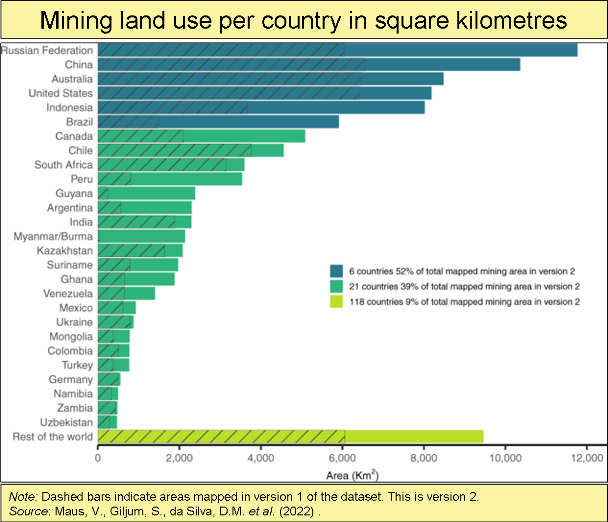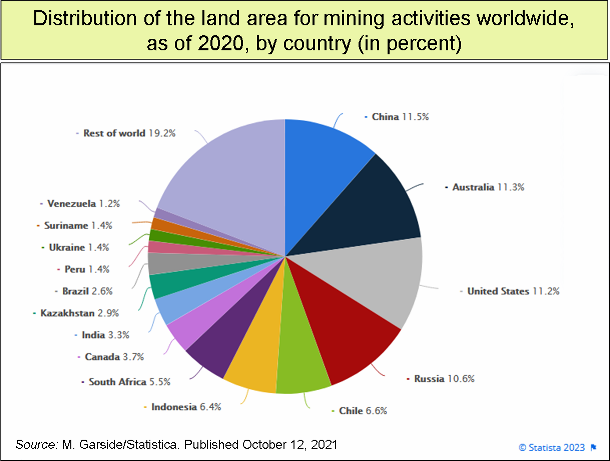A recent study identified 101,583 square kilometers (km2) of mining operations across the globe, based on the latest satellite imagery (Maus, Giljum, da Silva et al, 2022). This figure includes open cuts, tailings dams, waste rock dumps, water ponds, processing plants, and other ground features related to the mining activities. To put that number in perspective, agricultural land covers over 47 million km2 worldwide. However, the amount of land devoted to mining increases every year - thanks in large part to the growing market for renewal energy and electric vehicles. And that will devastate big chunks of wild habitat. To quote The Rising Chorus of Renewable Energy Skeptics by Andrew Nikiforuk:
“The current global mining footprint is already “unsustainable” if that plastic word has any meaning left. In his book Extraction to Extinction the British geologist David Howe politely notes that current mining operations have now become their own geological force, scraping , sorting and collecting more dirt, rock and sediment than the world’s rivers, wind, rain and glaciers every year. But you can’t build solar panels, wind mills or electric cars without mining more copper, lithium, iron and aluminum along with the rare earth technology metals that only appear in small concentrations. That means vastly more destructive scraping and digging of ocean floors, rainforests and tundras on a scale inconceivable to most environmentalists.”
On that cheery note, here are a couple charts on where all this mining is happening:
There has got to be a better way to keep the biosphere safe from a changing climate.
References:
Maus, V., Giljum, S., da Silva, D.M. et al. An update on global mining land use. Sci Data 9, 433 (2022). https://doi.org/10.1038/s41597-022-01547-4
The Rising Chorus of Renewable Energy Skeptics by Andrew Nikiforuk, The Tyee. April 7, 2023. https://thetyee.ca/Analysis/2023/04/07/Rising-Chorus-Renewable-Energy-Skeptics/

